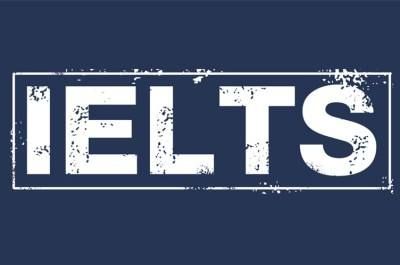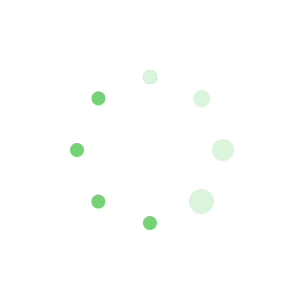READING PASSAGE 3
You are advised to spend about 20 minutes on Questions 26-39 which are based on Reading Passage 3 below.
THE ORIGINS OF INDO-EUROPEAN LANGUAGES
The traditional view of the spread of the Indo-European languages holds that an Ur-language, ancestor to all the others, was spoken by nomadic horsemen who lived in what is now western Russia north of the Black Sea near the beginning of the Bronze Age. As these mounted warriors roamed over greater and greater expanses, they conquered the indigenous peoples and imposed their own proto-Indo-European language, which in the course of succeeding centuries evolved in local areas into the European languages we know today. In recent years, however, many scholars, particularly archaeologists, have become dissatisfied with the traditional explanation.
The starting point of the problem of the origins of Indo-European is not archaeological but linguistic. When linguists look at the languages of Europe, they quickly perceive that these languages are related. The connections can be seen in vocabulary, grammar and phonology (rules for pronunciation). To illustrate the numbers from one to ten in several Indo-European languages. Such a comparison makes it clear that there are significant similarities among many European languages and also Sanskrit, the language of the earliest literary texts of India, but that languages such as Chinese or Japanese are not members of the same family (see figure 1).
ENGLISH OLD GERMAN LATIN GREEK SANSKRIT JAPANESE
ONE
TWO
THREE
FOUR
FIVE
SIX
SEVEN
EIGHT
NINE
TEN AINS
TWAI
THRIJA
FIDWOR
FIMF
SAIHS
SIBUM
AHTAU
NIUN
TAIHUM UNUS
DUO
TRES
QUATTOUR
QUINQUE
SEX
SEPTEM
OCTO
NOVEM
DECEM HEIS
DUO
TREIS
TETTARES
PENTE
HEKS
HEPTA
OKTO
ENNEA
DEKA EKAS
DVA
TRYAS
CATVARAS
PANCA
SAT
SAPTA
ASTA
NAVA
DASA HITOTSU
FUTATSU
MITTSU
YOTTSU
ITSUTSU
MUTTSU
NANATSU
YATTSU
KOKONOTSU
TO
FIGURE 1 Words for numbers from one to ten show the relations among Indo-European languages and the anomalous character of Japanese, which is not part of that family. Such similarities stimulated interest in the origins of Indo-European languages.
The Romance languages served as the first model for answering the question. Even to someone with no knowledge of Latin, the profound similarities among Romance languages would have made it natural to suggest that they were derived from a common ancestor. On the assumption that the shared characteristics of these languages came from the common progenitor (whereas the divergences arose later. as the languages diverged),it would have been possible to reconstruct many of the characteristics of the original proto-language. In much the same way it became clear that the branches of the Indo-European family could be studied and a hypothetical family tree constructed, reading back to a common ancestor roto-Indo-European.
This is the tree approach. The basic process represented by the tree model is one of divergence: when languages become isolated from one other, they differ increasingly, and dialects gradually differentiate until they become separate languages.
Divergence is by no means the only possible tendency in language evolution. Johannes Schmidt, introduced a "wave" model in which linguistic changes spared like waves, leading ultimately to convergence; that is, growing similarity among languages that were initially quite different.
Today, however, most linguists think primarily in terms of linguistic family trees. It is necessary to construct some explicit models of how language change might occur according to a process-based view. There are four main classes of models.
The first is the process of initial colonization, by which an uninhabited territory becomes populated; its language naturally becomes that of the colonizers. Second are processes of divergence, such as the linguistic divergence arising form separation or isolation mentioned above in relation to early models of the Indo-European languages. The third group of models is based on processes of linguistic convergence. The wave model, formulated by Schmidt in the 1870's, is an example, but convergence methods have not generally found favour among linguists.
Now, the slow and rather static operation of these processes is complicated by another factor: linguistic replacement. That factor provides the basis for a fourth class of models. In many areas of the world the languages initially spoken by the indigenous people have come to be replaced, fully or partially, by languages spoken by people coming from outside. Were it not for this large complicating factor, the world's linguistic history could be faithfully described by the initial distribution of Homo Sapiens, followed by the gradual, ling-term workings of divergence and convergence. So linguistic replacement also has a key role to play in explaining the origins of the Indo-European languages.
Questions 26-32
Below is a summary of part of Reading Passage 3,"The Origins of Indo-European Languages".
Read the summary and then select the best word or phrase from the box below to fill each gap. according to the information in the Reading Passage. Write the corresponding letters (A-L) in boxes 26-32 on your answer sheet.
N.B. There are more words and phrases than you will need to fill the gaps. You may use a word or phrase more than once if you wish.
Summary-Models of Language Change
Answer
Example There are four main models of language …… (Ex) …… K
The first is the process of initial colonization where an uninhabited territory becomes populated: the language spoken will therefore be that of the ……(26)……
Processes of ……(27)…… occur where different dialects, and then languages, develop from a common ……(28)…… Many of the original characteristics of this common ancestor can be reconstructed from what we know of the present separate ……(29)……
Processes of linguistic ……(30)…… occur when languages which were initially different become more similar through contact. The wave model, formulated by Schmidt in the 1870s, is an example.
The final model is that of linguistic ……(31)…… In this model, a new language replaces the language spoken by the ……(32)……
A colonizers G languages
B invaders H waves
C proto-language I replacement
D indigenous people J convergence
E linguists K development
F model L divergence







